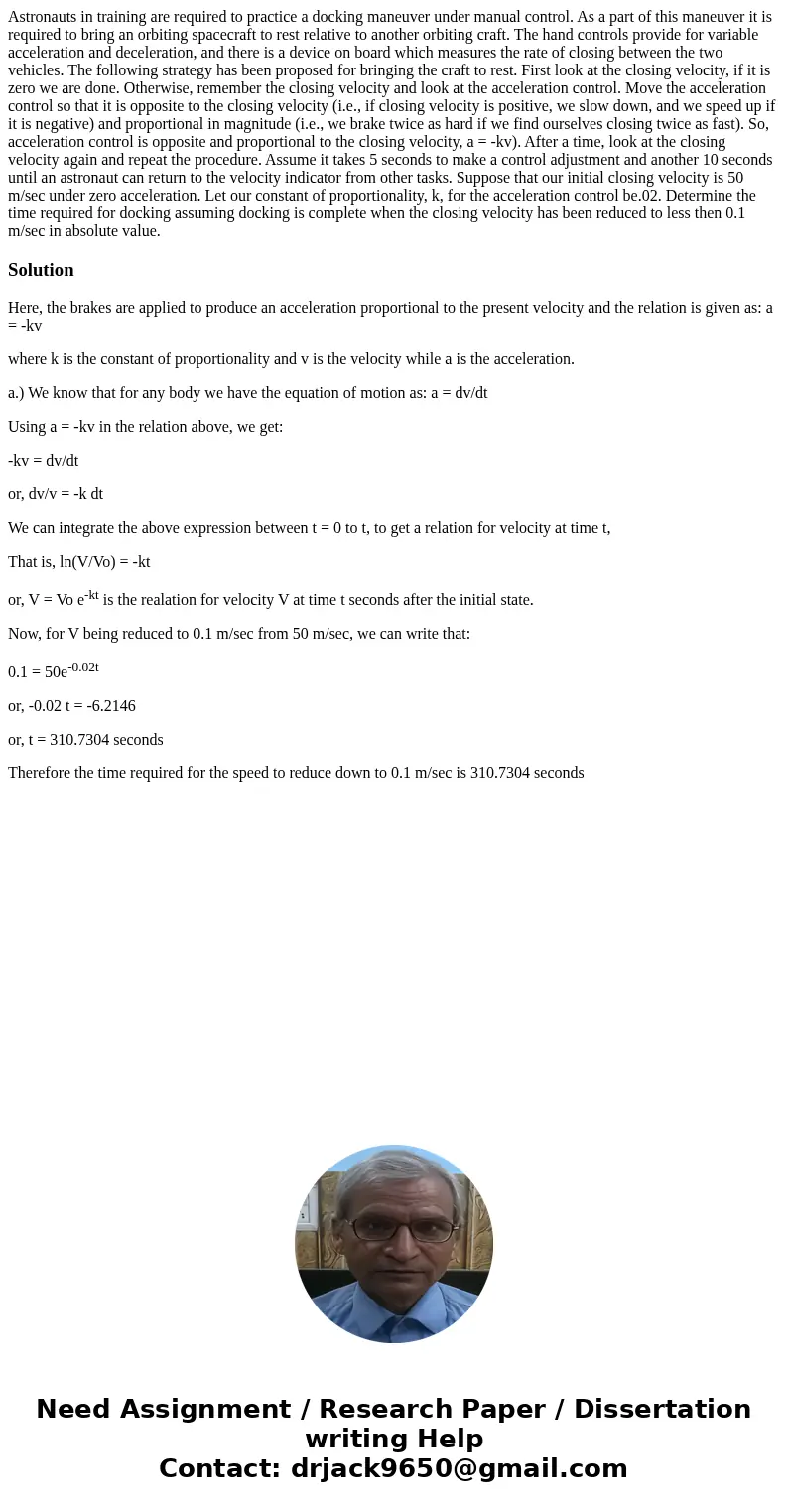Astronauts in training are required to practice a docking maneuver under manual control. As a part of this maneuver it is required to bring an orbiting spacecraft to rest relative to another orbiting craft. The hand controls provide for variable acceleration and deceleration, and there is a device on board which measures the rate of closing between the two vehicles. The following strategy has been proposed for bringing the craft to rest. First look at the closing velocity, if it is zero we are done. Otherwise, remember the closing velocity and look at the acceleration control. Move the acceleration control so that it is opposite to the closing velocity (i.e., if closing velocity is positive, we slow down, and we speed up if it is negative) and proportional in magnitude (i.e., we brake twice as hard if we find ourselves closing twice as fast). So, acceleration control is opposite and proportional to the closing velocity, a = -kv). After a time, look at the closing velocity again and repeat the procedure. Assume it takes 5 seconds to make a control adjustment and another 10 seconds until an astronaut can return to the velocity indicator from other tasks. Suppose that our initial closing velocity is 50 m/sec under zero acceleration. Let our constant of proportionality, k, for the acceleration control be.02. Determine the time required for docking assuming docking is complete when the closing velocity has been reduced to less then 0.1 m/sec in absolute value.
Here, the brakes are applied to produce an acceleration proportional to the present velocity and the relation is given as: a = -kv
where k is the constant of proportionality and v is the velocity while a is the acceleration.
a.) We know that for any body we have the equation of motion as: a = dv/dt
Using a = -kv in the relation above, we get:
-kv = dv/dt
or, dv/v = -k dt
We can integrate the above expression between t = 0 to t, to get a relation for velocity at time t,
That is, ln(V/Vo) = -kt
or, V = Vo e-kt is the realation for velocity V at time t seconds after the initial state.
Now, for V being reduced to 0.1 m/sec from 50 m/sec, we can write that:
0.1 = 50e-0.02t
or, -0.02 t = -6.2146
or, t = 310.7304 seconds
Therefore the time required for the speed to reduce down to 0.1 m/sec is 310.7304 seconds

 Homework Sourse
Homework Sourse